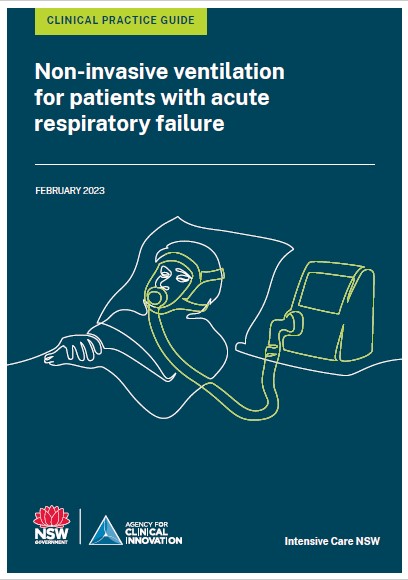Published: 2023. Next review: 2028.
This guide supports local health districts and hospitals to develop local procedures and guidelines for non-invasive ventilation (NIV) for critically ill patients with acute respiratory failure.
This guide aims to ensure:
- patients receive appropriate care at the right time and within the right location of the hospital
- services are safe, effective and sustainable
- staff receive appropriate education, training and support.
At a glance
Clinical assessment
- Indications
- Contraindications
- Patient assessment
- Initiation and settings
- Escalation of therapy
Equipment
- Non-invasive ventilation setup
- Humidification
- Mask/machine interface
- Infection control
- Equipment management
Patient care
- Observation and monitoring
- Skin integrity
- Nutrition and hydration
- Weaning
- Non-invasive ventilation in a palliative care setting
Staff capability – Education and training – Governance
